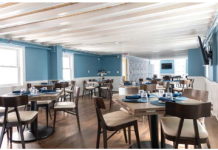By Charles B. Rubinstein
“The fault, dear Brutus, is not in our stars…”
from Julius Caesar, by William Shakespeare
Cassius, in speaking to his friend, Brutus, had far weightier matters in mind, but he could well have concluded that the fault was in the wine. Ever since grapes have been fermented there have been faults that can and do occur in wine.
Fortunately, winemaking has improved to the point that these problems are not common. Even if the wine has a fault, there is a good chance that it will go unrecognized by the average wine drinker. If you have ever come across a wine that didn’t seem right, perhaps because the smell was off or it tasted funny but you weren’t sure why, then read on. The next time it happens you will know what the problem is. Should you encounter the fault at home, you can simply pour the wine out, but if it occurs in a restaurant, it pays to know how to deal with the situation.
Cork Taint is one of the most common faults in wine and the wine is usually referred to as being “corked.” Needless to say it can only be present when the closure for the bottle is a defective cork. The wine will smell like wet cardboard or moldy newspaper. The culprit goes by the name 2,4,6-Trichloroanisole, which is a mouthful to remember, or TCA for short. Studies have shown that between 3 to 5 percent of all wines have TCA tainted corks. Many wine drinkers can detect the smell at about six parts per trillion. Chlorine, which was used to clean the corks, aided the development of TCA. Peroxide bleach is now used in place of chlorine. Ask your server to replace a corked wine with the same wine.
Brettanomyces, commonly known to connoisseurs as Brett, is not a fault when subtle, but can be when overdone. The smell has been described as barnyard, sweaty, saddle, or horsy. It is caused by spoilage yeast. Some Burgundies are known to have subtle amounts much to the delight of those wine drinkers who favor it. If you find it offensive, ask your server to replace the bottle with a different wine because the same wine will also be affected.
Oxidation is a fault that occurs when the wine has been exposed to poor handling or high temperature resulting in excessive dissolved oxygen in the bottle. It can happen at bottling or during storage in the bottle when a cork leaks air. The wine will smell like Madeira and white wines will appear brown. Ask your server to replace the bottle with the same wine.
Volatile acidity, known as VA, causes a wine to smell like vinegar or nail polish remover. It comes from too much acetic acid and/or ethyl acetate in the wine. Bacteria or spoilage yeast are the culprits. Ask your server to replace the bottle with the same wine.
Sulfur dioxide is added to wine, especially white wine, to prevent oxidation and as a cleansing agent in barrels. Carefully managed, there is no problem, but if not, there will be a struck match odor. If hydrogen sulfide has formed, there will be an odor of rotten eggs when the wine bottle is opened. It will blow off, but if it doesn’t, ask your server to replace the bottle with the same wine.
Refermentation is a problem that can be spotted if you see bubbles in what should be a still wine, i.e. a wine that is not supposed to be a sparkling wine. The culprit is yeast that has remained in the wine and starts to ferment any remaining sugar. Ask your server to replace the bottle with the same wine. Note that there are some wines that are not sparkling but traditionally have a little spritz in them, Vinho Verdes for example.
Sediment and tartrate crystals are not faults, but both can ruin your enjoyment of the wine if you do not understand them. Sediment is a natural occurrence in a bottle of wine. As a wine ages, solid matter precipitates out and collects along the side of a bottle that has been lying down. Decanting or letting the bottle stand upright for a few hours before carefully pouring will prevent the sediment from getting into the glass of wine. Tartrate crystals are sometimes found on the underside of the cork or elsewhere in the bottle. If the wine has not been cold stabilized in the winery, the crystals may precipitate out when the wine is stored in a cold cellar or is chilled before serving. The crystals are harmless. Simply remove them.
If you have questions or comments about wine, write to me at The Two River Times™or e-mail me at trtwineman@aol.com.
Pick of the Bunch
Highly Recommended
2010 Dr Loosen Riesling Kabinett Erdener Trepchen, Mosel ($25)
2009 J J Prüm Riesling Kabinett Wehlener Sonnenuhr, Mosel ($35)
2005 Château Lascombes, Margaux ($100)
Recommended
2010 Columbia Crest Grand Estates Chardonnay, Columbia Valley ($10)
2010 Man Vintners Chenin Blanc, Stellenbosch ($10)
2010 Villa Maria Private Bin, Marlborough ($13)














